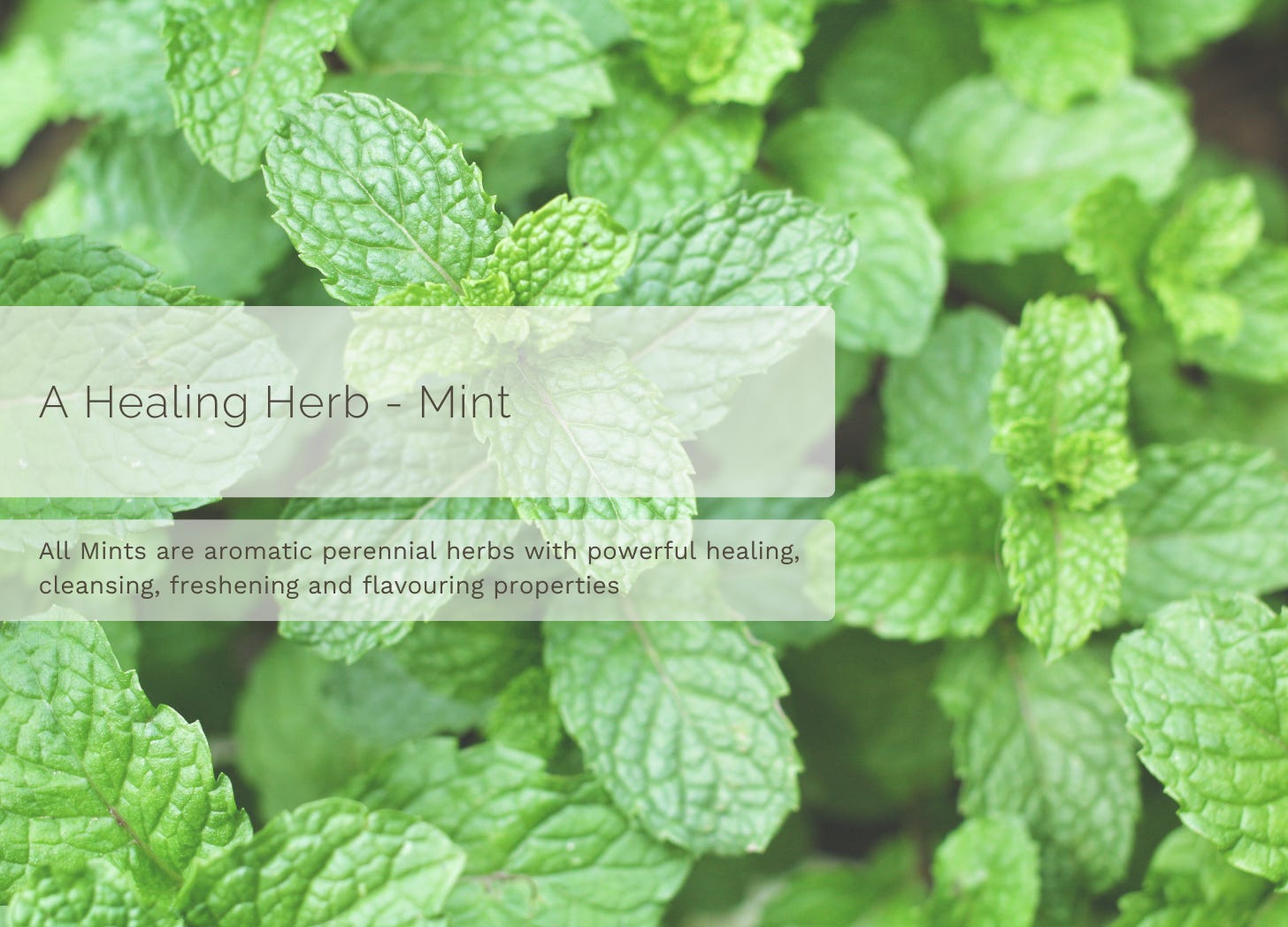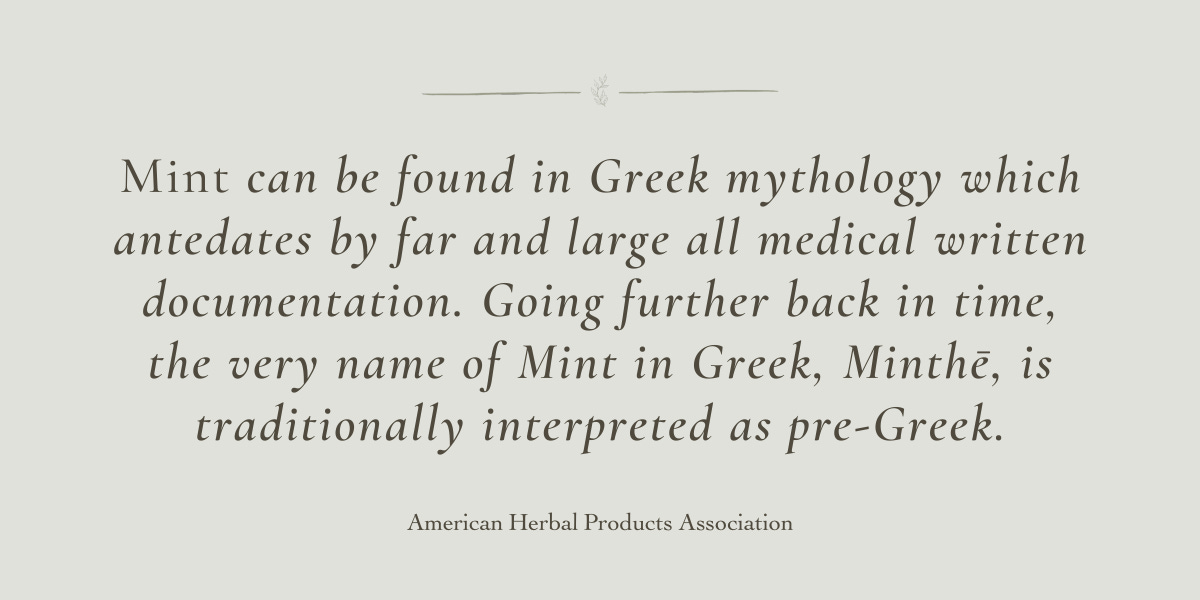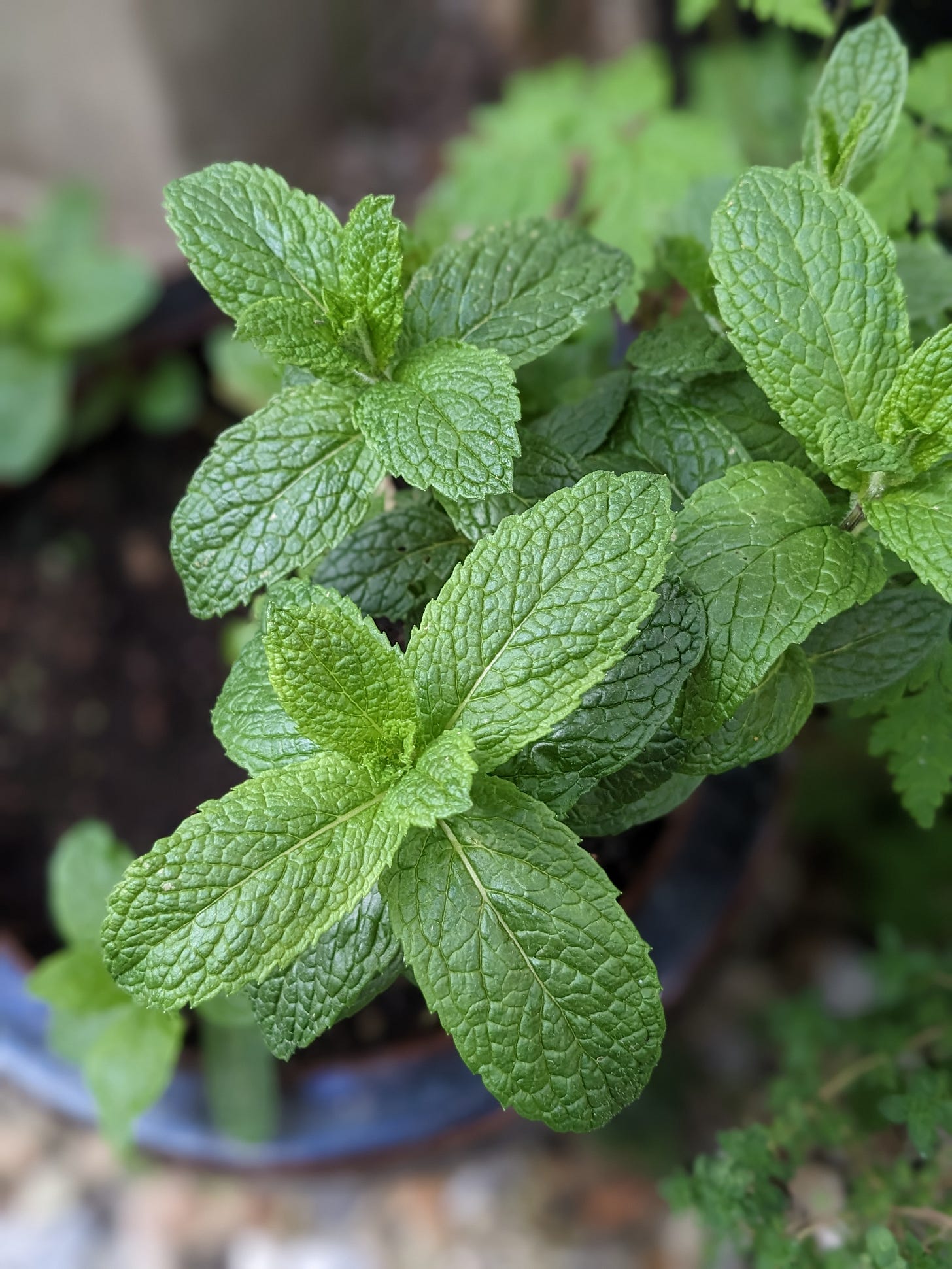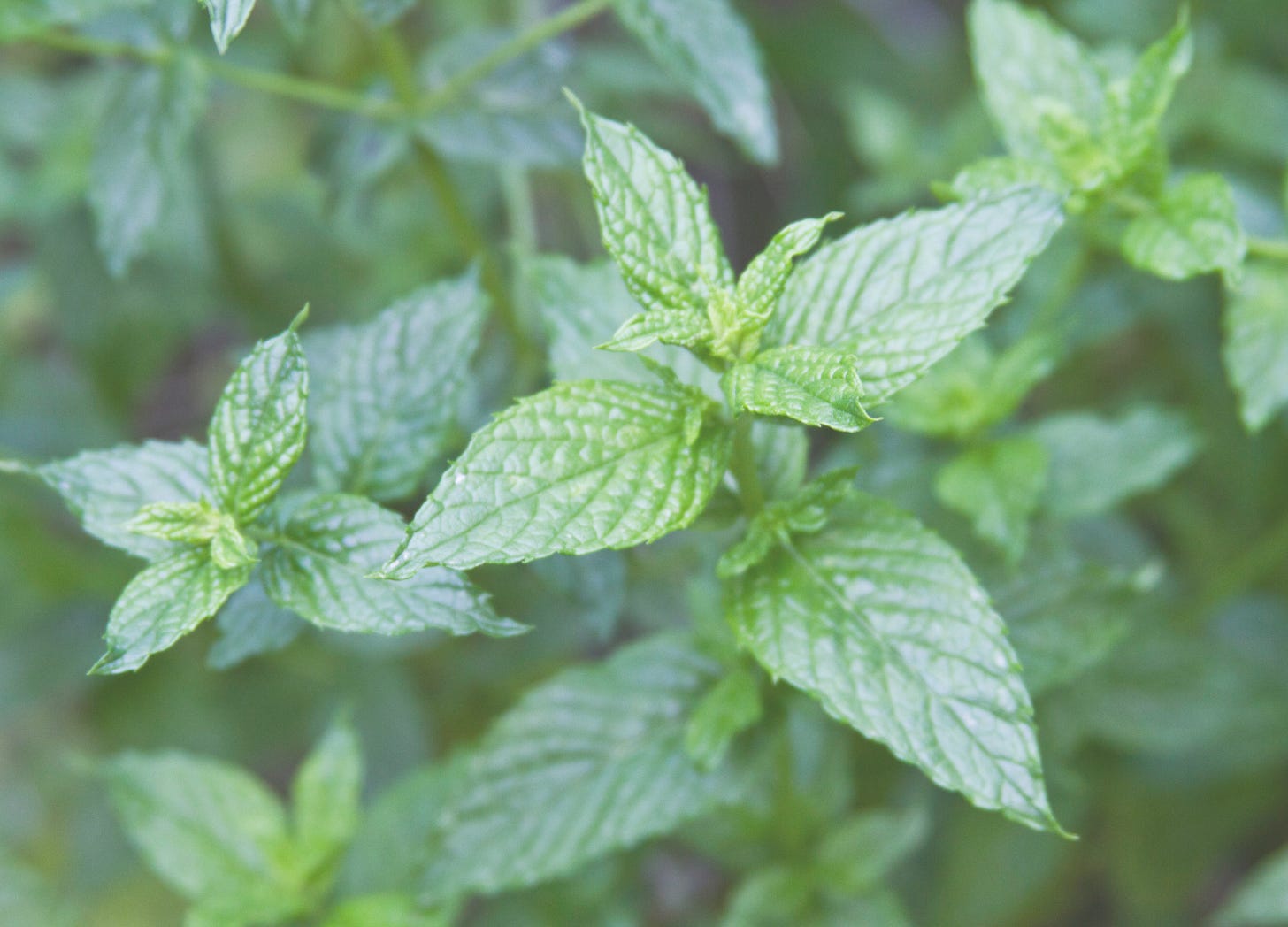A Healing Herb - Mint
Mints are aromatic perennial herbs with powerful healing, cleansing, freshening and flavouring properties
Hi, I’m Sue and I write about the beauty and ingenuity of Nature, and how we can deepen our connection for our optimum health and wellbeing. Discover more Nature-inspired content on Spiral Leaf and my video Nature Channel.
A Healing Herb Guide
Mint is the fourth herb to feature in my new Healing Herb Guide.
Mints are aromatic, almost exclusively perennial herbs. They have wide-spreading underground and overground stolons (or root runners) and strong, upright, square-shaped, branching stems. The fragrance of Mint is quite heavenly and is the essence of freshness. Cool, breezy and clean, Mint mingles in our fragrances for a pop of peppery energy and lives on like a breath of fresh air.
The scent of Peppermint in particular stimulates our Olfactory System, allowing the brain to release chemicals to make us feel relaxed. For this reason, Peppermint Oil is often used to treat stress, anxiety and restlessness.
Common types of Mint include Spearmint with its distinctive fresh taste used in toothpaste and for cooking, and Peppermint which is used medicinally ro relieve digestive issues, colds, bacterial infections and nausea. Peppermint Oil is applied to the skin in a carrier such as Jojoba Oil to treat headaches, muscle aches, joint pain and skin irritation.
There are over 7,500 varieties of Mint due to it being a species that regularly hybridises, naturally creating different species. It has been bred intensely to bring out certain traits, and imbue the plant with specific flavours.
Wild Mint is a native perennial plant of the British Isles that can be found growing on farmland, woodland margins and waste ground. It is a tall, hairy, branched plant with oppositely-paired oval leaves.
Mint was used to bring unity to gatherings in Pagan times and for undoing magic, breaking hexes, curses and spells, and for unwinding oneself from a tricky situation or a commitment unwittingly made.
I hope you enjoy discovering the life-giving and healing benefits of Mint as part of a healthy diet for your good health and wellbeing.
Folklore
Mint is one of the easiest herbs to grow, and will in fact take over your garden if not kept carefully contained. Fortunately, it’s also one of the most versatile edible plants in our repertoire, with uses that range from the ritual to the medicinal, as well as playing a key role in cuisines around the world.
Mint was often used to scent banqueting and dining rooms in Egypt, Greece and Rome, where it was believed to lift the spirits and reduce aggression as well as provide a generally hospitable atmosphere for guests.
This sacred healing herb has been used for centuries in traditional medicine including human and veterinary medicine, as insecticides or insect repellents, and as antifungal or antibacterial protection for crop plants.
Nutrition
Spearmint is a sweet, mild herb packed with vitamins, minerals and antioxidants including vitamin A, C, B-complex, beta carotene, iron, magnesium, calcium, manganese, and potassium.
Spearmint in particular is wonderful for digestive ailments such as nausea, indigestion, ulcers, halitosis and flatulence. It provides relief from headaches, sinus congestion, sore throats, fatigue, stress and anxiety.
Spearmint helps to promote blood circulation and improves metabolism making it an excellent choice for cleansing and weight loss. Spearmint supports respiratory issues such as bronchitis, asthma and respiratory inflammation.
All mints have medicinal, culinary and cosmetic properties that relax and cleanse the body, invigorate and sharpen the brain's function and clean and refresh the skin.
SOURCE: Medical Medium - Spearmint
Remedies
Mint is a source of menthol which is a cooling and relaxing agent providing relief from discomfort from skin burns and irritations. This makes it useful for relieving respiratory difficulties.
Mint is good at relaxing the muscles in your body which is why it is used to treat stomach and chest pains. Most notably, it has been used to treat Irritable Bowel Syndrome because it relaxes the muscles of the digestive tract.
Peppermint Oil has been known to alleviate IBS symptoms as the menthol properties relax muscles in the digestive system. In turn, this helps to improve digestion and reduce stomach pain.
A simple Mint Tea (see below) can provide relief and boost brain function. Enjoy this as a post-meal treat to aid digestion, in the afternoon to boost your energy levels or before bed to help you relax.
Eating fresh or dried leaves is an excellent way to treat bad breath while inhaling essential oils in steam (a few drops added to hot water) helps to improve brain function and cold symptoms.
Peppermint Essential Oil provides a refreshing and cooling sensation when mixed with Jojoba Oil and applied to the skin. It makes an excellent choice for an invigorating and refreshing massage blend. The cool aroma of peppermint helps to uplift the senses and promote relaxation.
Recipes
Mint Herbal Tea
Fresh (or dried) Mint (any kind) makes a powerful healing herbal tea and a perfect refresher for clarity and focus.
Ideally, steep a handful of fresh sprigs in hot filtered water for at least 10 minutes or soak overnight in a pitcher of filtered water to sip throughout the day.
Add organic Raw Honey and fresh Lemon juice for added nutrients, sweetness and flavour.
Linguine with Peas and Mint Pesto
A fresh-flavoured pasta dish which is super quick and easy to make. The perfect treat to bring together with fresh ingredients and nutritious Pine Nuts that add a welcome crunch to the dish.
COMING SOON!
A growing collection
I hope you enjoyed the fourth in an ongoing series of posts about the healing powers and health benefits of herbs that can be grown in any sized garden - and in pots too!
Thank you for joining me on this journey of herbal delights and discovery. I hope it will become a helpful resource that you can rely on for well-researched and tested information - and as a starting point for further learning.
I look forward to seeing you again soon.
Other Herbs to explore …
A Healing Herb - Lemon Verbena
Stay up-to-date
As a free subscriber you never miss an update with every new post sent directly to your email inbox. For a non-spam, ad-free reading experience with audio and community features, try the Substack app.












thank you for this! I've been drinking mint tea for several weeks now and I just bought a tea infuser to make my experience a little easier. It's a good reminder of why I love mint tea so much.
Spearmint & lemon balm (in mint family but not a mint) seem to self propagate in my garden like crazy! Thanks. This is a good reminder to me that I should pick the leaves and make tea more often or dry them for later. I collect oregano and thyme regularly and dry them for cooking but haven't tried doing the same with mint leaves - for teas.